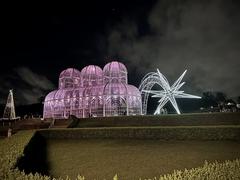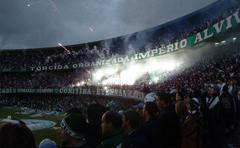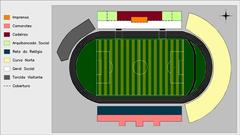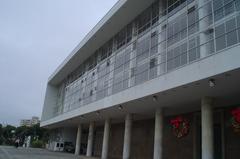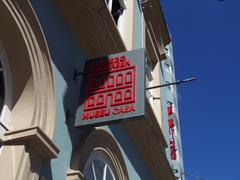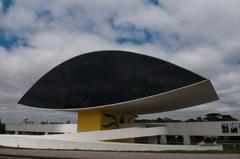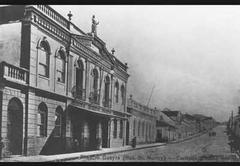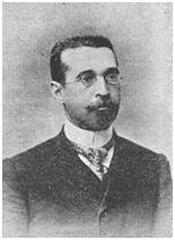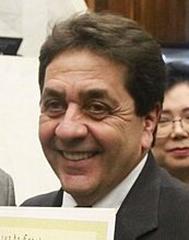
Civic Center Curitiba: Visiting Hours, Tickets, and Historical Sites Guide
Date: 04/07/2025
Introduction
Located in the vibrant heart of Curitiba, Brazil, the Centro Cívico (Civic Center) is a landmark that encapsulates the city’s history, architectural innovation, and civic spirit. Conceived in the mid-20th century as part of a visionary urban plan by French planner Alfred Agache, the Centro Cívico was designed to serve as Paraná’s administrative and cultural hub, commemorating the state’s centennial and establishing Curitiba as a model for modern urban development. The district features modernist architecture, expansive plazas, and green spaces, making it both an administrative center and a cultural destination. With highlights such as the Palácio Iguaçu and the nearby Oscar Niemeyer Museum—Latin America’s largest art museum—the Centro Cívico offers visitors an engaging journey through the city’s political, cultural, and architectural heritage (Centro Cívico Curitiba - Wikipedia; Innovationsoftheworld.com; Viajali).
Table of Contents
- Origins and Urban Vision
- Construction and Centennial Celebration
- Architectural Style and Urban Layout
- Visiting Centro Cívico Curitiba: Hours, Tickets, and Accessibility
- Nearby Attractions and Photographic Spots
- Events, Civic Life, and Cultural Importance
- Key Attractions and Landmarks
- Location, Accessibility, and Visitor Tips
- FAQs
- Conclusion and Recommendations
- References
Origins and Urban Vision
The concept for Curitiba’s Civic Center emerged in the 1940s when Alfred Agache envisioned a grand plaza to centralize government institutions in a landscaped setting. His plan responded to the city’s rapid growth and aimed to symbolize Curitiba’s embrace of modernist ideals—transparency, accessibility, and civic engagement (Curitiba City Planning History).
Construction and Centennial Celebration
Construction of the Centro Cívico began in the early 1950s to celebrate Paraná’s 100th anniversary. Officially inaugurated in 1953, it became Brazil’s first purpose-built civic district, drawing inspiration from North American government complexes. The Palácio Iguaçu, completed in 1954, emerged as its centerpiece, flanked by courts, legislative buildings, and educational institutions (Urban LEDS Case Study on Curitiba).
Architectural Style and Urban Layout
The Civic Center is defined by its modernist architecture—clean lines, open plazas, and integration with green spaces. Prominent plazas like Praça 19 de Dezembro and Praça Nossa Senhora de Salette create inviting public arenas. Government buildings, cultural institutions, and landscaped gardens are clustered for accessibility and visual harmony (Innovationsoftheworld.com).
Visiting Centro Cívico Curitiba: Hours, Tickets, and Accessibility
- Public Spaces: Open daily from early morning until late evening (generally 8:00 AM–6:00 PM).
- Government Buildings: Most are accessible Monday to Friday, 9:00 AM–5:00 PM. Some may require advance notice for tours.
- Tickets: Access to outdoor spaces is free. Admission fees may apply for museums like the Oscar Niemeyer Museum.
- Guided Tours: Available for key sites such as Palácio Iguaçu and the Legislative Assembly. Booking ahead is recommended.
- Accessibility: Wheelchair-accessible paths, ramps, and restrooms are available. Public transport connections and bike lanes enhance accessibility (Brazil City Guides).
Nearby Attractions and Photographic Spots
Oscar Niemeyer Museum (Museu Oscar Niemeyer)
- Highlights: Renowned for its “Eye” design and contemporary art collections.
- Hours: Tuesday–Sunday, 10:00 AM–6:00 PM (closed Mondays).
- Tickets: Around BRL 20; discounts for students/seniors (Viajali).
Praça Nossa Senhora de Salette
- A vibrant square hosting cultural events, public gatherings, and featuring iconic sculptures.
Other Landmarks
- Palácio das Araucárias: Government offices.
- Legislative Assembly of Paraná: Open to visitors during legislative sessions.
- Palácio 29 de Março: City Hall blending modernist and colonial architecture.
Photographic Tips: Capture the Oscar Niemeyer Museum’s curves, the Palácio Iguaçu, and the lively plazas—especially during events or at dusk.
Events, Civic Life, and Cultural Importance
The Civic Center is a stage for festivals, protest marches, art fairs, and civic celebrations, especially at Praça Nossa Senhora de Salette. Its designation as a protected urban and architectural ensemble in 2011 ensures preservation of its historical and cultural value (ilovecuritiba.com.br).
Key Attractions and Landmarks
- Memorial da Segurança no Transporte: Interactive museum on transportation safety.
- John Bull Pub: Popular nightlife venue with live music.
- Nearby Institutions: Espaço Cultural Capela Santa Maria, Museu da Imagem e do Som do Paraná, Museu Histórico PMPR.
Location, Accessibility, and Visitor Tips
Getting There
- By Air: Afonso Pena International Airport is 18 km away; taxis, shuttles, and ride-sharing available (Fareja Viagens).
- By Bus: Rodoferroviária terminal is 3 km from the Civic Center.
- By Car: Paid parking and metered spaces are available.
- By Public Transport: Well-served by Curitiba’s bus system, including the “Linha Turismo” (Tourism Line) hop-on/hop-off bus (iHeartBrazil).
On Foot and By Bicycle
Wide sidewalks and bike lanes make the area pedestrian- and cyclist-friendly.
Dining and Accommodation
- Cafés: Café do Paço, Confeitaria Swisse.
- Restaurants and Bars: Gold Skull Bar, Boteco Municipal.
- Hotels: Found in Batel, Historic Center, and Alto da Glória neighborhoods (SacaVoyage).
Safety and Practical Tips
- Daytime visits are safest; be vigilant during major events.
- Most public areas are wheelchair accessible; older buildings may have limited access.
- Bring rain gear and dress in layers for unpredictable weather.
- Portuguese is the official language; carrying some cash is advisable.
FAQs
Q: What are the Civic Center Curitiba visiting hours?
A: Public spaces are open daily; government buildings are generally open Monday–Friday, 9:00 AM to 5:00 PM.
Q: Are tickets required for entry?
A: Most outdoor and government areas are free; museums like the Oscar Niemeyer Museum charge admission.
Q: Are guided tours available?
A: Yes, booking in advance is recommended for tours of the Palácio Iguaçu, Legislative Assembly, and museums.
Q: Is the Civic Center accessible by public transport?
A: Yes, multiple bus lines and the Tourism Line provide direct access.
Q: Is the area safe for tourists?
A: Yes, especially during the day; exercise caution during crowded events.
Conclusion and Recommendations
The Civic Center of Curitiba is a showcase of the city’s rich history, bold modernist architecture, and vibrant public life. With free access to most public areas, engaging museums, guided tours, and excellent connectivity by public transport and pedestrian routes, the Centro Cívico is a highlight for any visitor. To make the most of your experience:
- Schedule visits during weekday mornings for a quieter atmosphere.
- Don’t miss the Oscar Niemeyer Museum and the lively Praça Nossa Senhora de Salette.
- Use the Audiala app for up-to-date information on events, guided tours, and visitor amenities.
- Explore beyond the Civic Center to nearby historic districts and cultural venues.
Whether your interests are in history, art, architecture, or civic culture, the Civic Center offers a comprehensive, memorable experience at the heart of Curitiba (CNCTRAVEL; Travellers Worldwide; ilovecuritiba.com.br).
References
- Centro Cívico Curitiba - Wikipedia
- Curitiba City Planning History
- Urban LEDS Case Study on Curitiba
- Britannica - Curitiba
- Lonely Planet - Curitiba
- Innovationsoftheworld.com - Curitiba the Most Intelligent City in the World
- CNCTRAVEL - Curitiba Urban Innovation: A Roadmap for Sustainable Cities
- ilovecuritiba.com.br - O Que Fazer no Centro de Curitiba?
- Viajali - Centro Cívico Curitiba Visitor Guide
- Brazil City Guides - Curitiba Travel Guide
- Fareja Viagens - Guia Completo de Curitiba
- Travellers Worldwide - Best Places to Visit in Brazil
- iHeartBrazil - Things to Do in Curitiba
- SacaVoyage - Curitiba Neighborhood Guide



